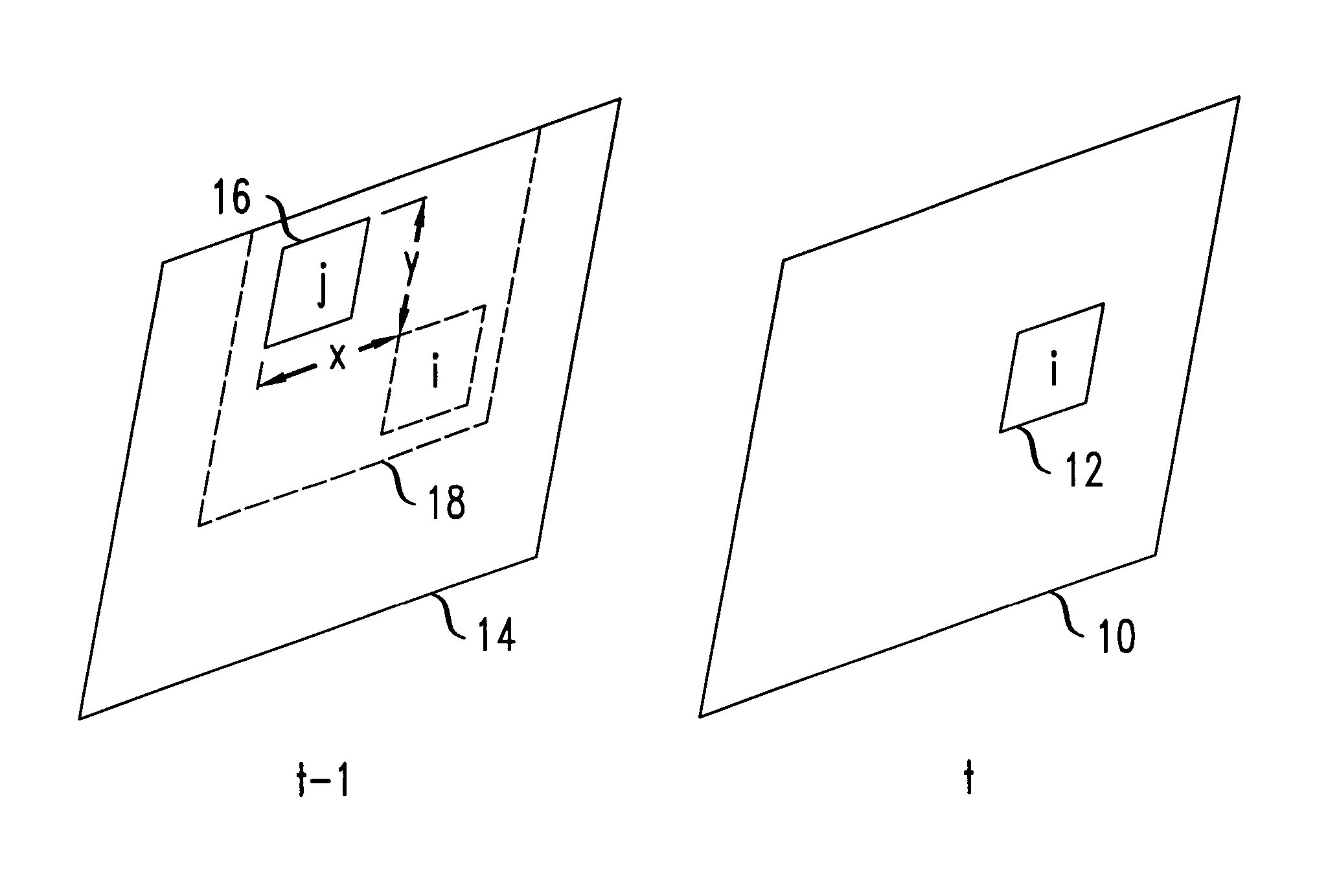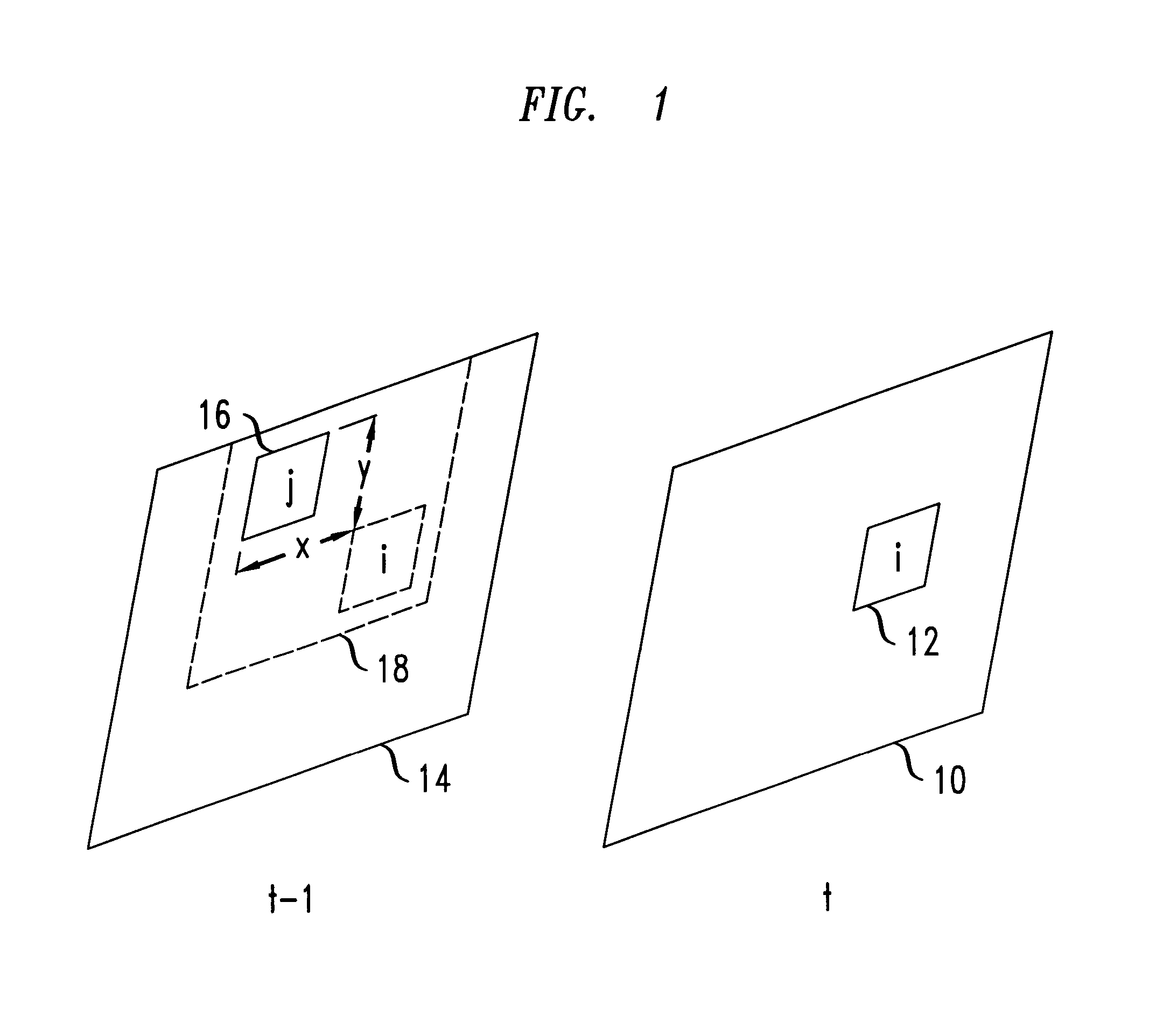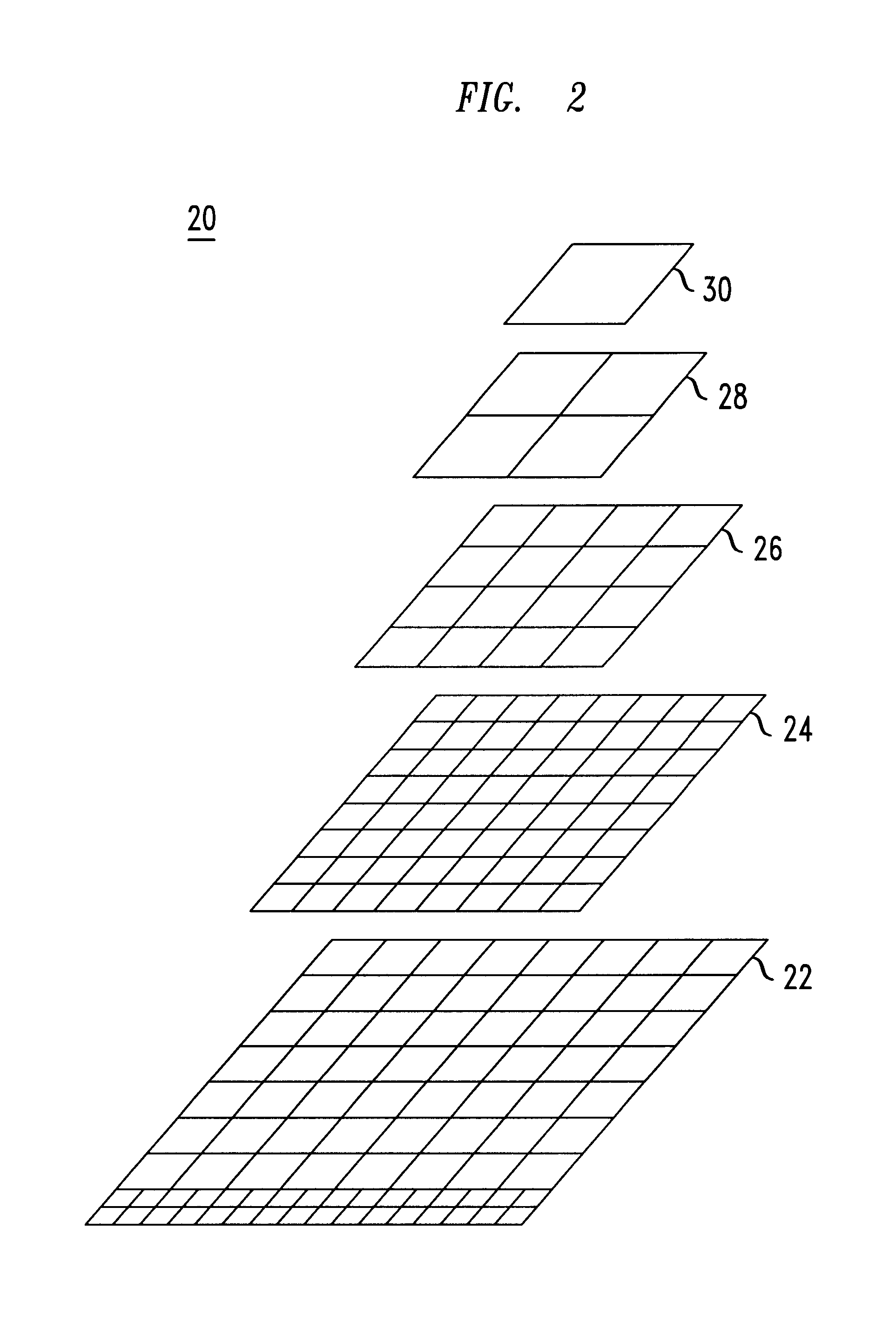Motion estimation and compensation for video compression
- Summary
- Abstract
- Description
- Claims
- Application Information
AI Technical Summary
Benefits of technology
Problems solved by technology
Method used
Image
Examples
Embodiment Construction
According to a preferred embodiment of the present invention, a method is disclosed for using variable-block sizes as a mask for a group of picture elements (pixels) for detecting and processing video movement, rather than the fixed-block size of conventional approaches. A video block that has no motion from a previous frame can be transmitted as a larger block than a video block that has pixel motion. A differentiation algorithm derives the largest sized data elements that can still retain the resolution of a motion event. The variable-sized elements are then stored or transmitted sequentially.
To allowing for the intermixing of such variable-sized elements, each element is preceded by a short data header, which signifies the resolution of the trailing data element. The procedure for deriving these data elements involves creating a data tree from the pixel information at the densest resolution of the video display. The data tree is then pruned to obtain the smallest data size that, ...
PUM
 Login to View More
Login to View More Abstract
Description
Claims
Application Information
 Login to View More
Login to View More - R&D
- Intellectual Property
- Life Sciences
- Materials
- Tech Scout
- Unparalleled Data Quality
- Higher Quality Content
- 60% Fewer Hallucinations
Browse by: Latest US Patents, China's latest patents, Technical Efficacy Thesaurus, Application Domain, Technology Topic, Popular Technical Reports.
© 2025 PatSnap. All rights reserved.Legal|Privacy policy|Modern Slavery Act Transparency Statement|Sitemap|About US| Contact US: help@patsnap.com



